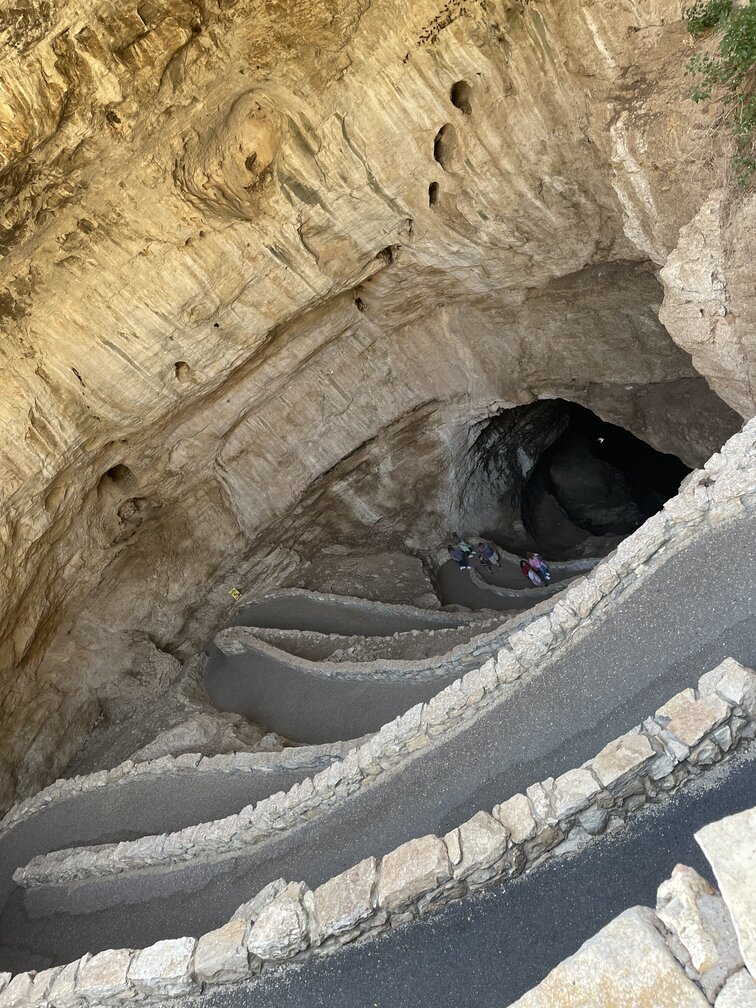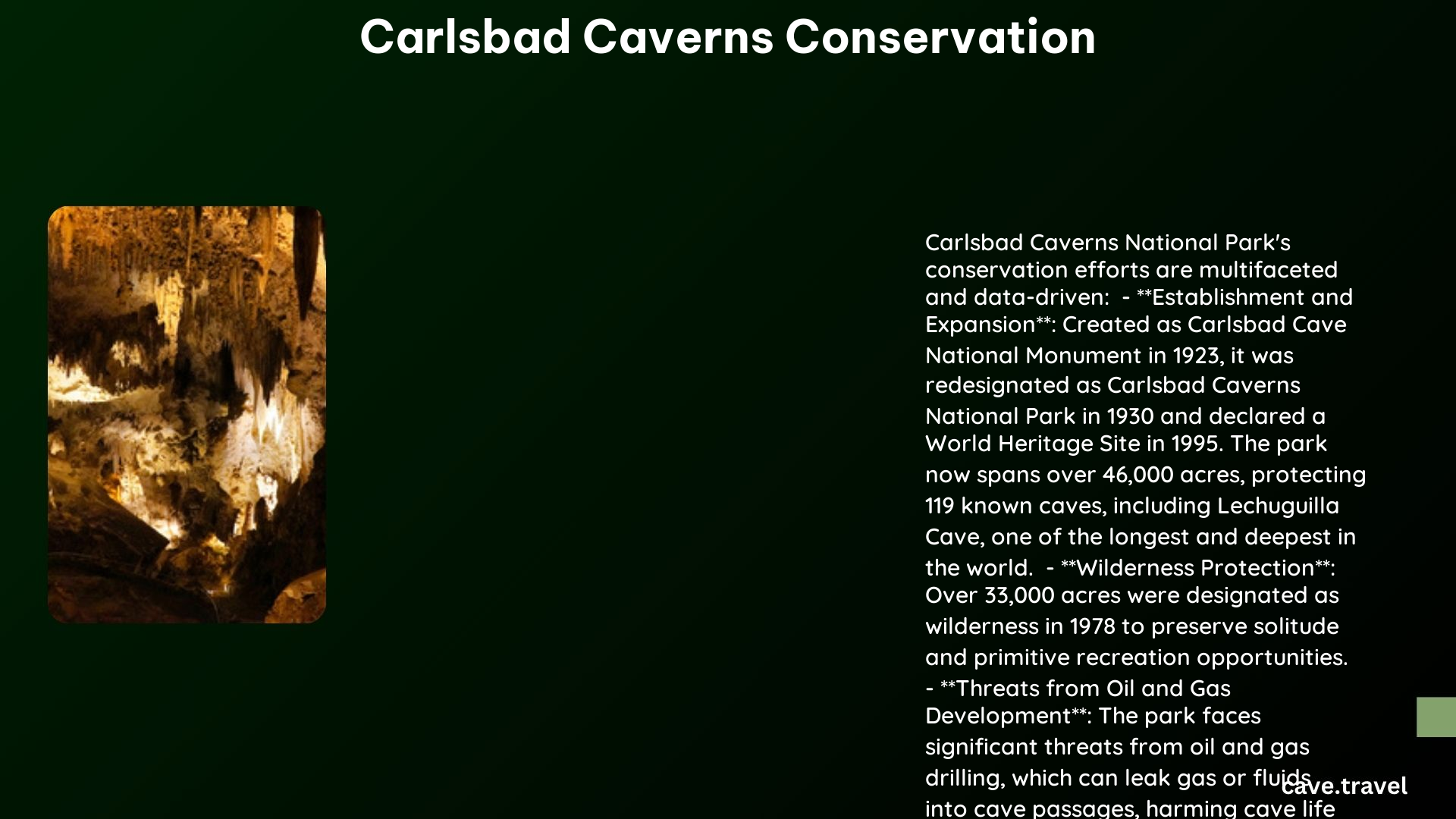Carlsbad Caverns conservation efforts focus on protecting the unique cave ecosystems, preserving bat populations, and mitigating human impact. The National Park Service employs strict management strategies, including access control, waste reduction, and ongoing research. Conservation challenges include external threats from oil and gas development, groundwater contamination, and balancing visitor access with ecosystem preservation. Comprehensive plans guide long-term protection of this UNESCO World Heritage site.
What Are the Key Conservation Strategies at Carlsbad Caverns?

Carlsbad Caverns National Park implements a multi-faceted approach to conservation, guided by federal legislation and comprehensive management plans. The primary strategies include:
- Cave Ecosystem Protection
- Bat Population Conservation
- Visitor Impact Mitigation
- Water Resource Management
- External Threat Mitigation
How Does Cave Ecosystem Protection Work?
The park’s cave ecosystem protection efforts are rooted in several key initiatives:
- Legal Framework: The Federal Cave Resources Protection Act of 1988 and the Lechuguilla Cave Protection Act of 1993 provide the legal basis for conservation efforts.
- Access Control: Strict limitations on access to backcountry caves help prevent damage to fragile ecosystems.
- Research and Monitoring: Ongoing studies track the health of cave habitats and species distributions.
For example, invertebrate transects throughout Carlsbad Cavern have revealed changes in cave habitats due to visitor activities, informing management decisions.
What Measures Are in Place for Bat Population Conservation?
Bat conservation is a critical component of Carlsbad Caverns’ conservation efforts:
- Annual bat counts monitor population fluctuations
- Studies on environmental impacts on bat species
- Protection of roosting sites
In 2020, the park reported approximately 1 million Brazilian free-tailed bats, highlighting the importance of these conservation measures.
How Is Visitor Impact Mitigated?
To reduce the human footprint on the caverns, the park has implemented:
- Strict rules for cave exploration
- Waste reduction programs
- Educational initiatives at the visitor center
- Sustainable tourism practices
These measures aim to balance public access with ecosystem preservation.
What Are the Water Resource Management Strategies?
Water resource management is crucial for the park’s ecosystem health:
- Protection of Rattlesnake Springs, the primary water source
- Monitoring of groundwater contamination
- Mitigation of surface activity impacts
Studies estimate that about 5.3 million liters of contaminated water enter the groundwater system annually, underscoring the importance of these efforts.
How Are External Threats Addressed?
External threats, particularly from oil and gas development, are managed through:
- Collaboration with conservation groups to remove nearby proposed leases
- Enforcement of regulations on methane capture
- Monitoring of potential gas or fluid leaks into cave passages
These efforts aim to protect both the cave ecosystem and visitor safety.
What Research and Monitoring Programs Are in Place?

Carlsbad Caverns National Park conducts extensive research and monitoring programs:
| Program | Focus Area | Purpose |
|---|---|---|
| NPS Inventory and Monitoring | Air quality, climate, invasive plants, spring ecosystems | Track vital signs for long-term resource health |
| Bat Population Studies | Population counts, environmental impact assessment | Monitor bat species health and habitat |
| Cave Habitat Research | Invertebrate transects, ecosystem changes | Assess human impact and guide conservation strategies |
| Groundwater Studies | Contamination levels, water flow patterns | Protect water resources and cave formations |
These programs provide crucial data for informed conservation decision-making.
How Does the Park Balance Conservation with Public Access?
Balancing conservation with public access is a key challenge for Carlsbad Caverns. The park employs several strategies:
- Controlled access to sensitive areas
- Educational programs to promote responsible visitation
- Implementation of sustainable tourism practices
- Regular assessment of visitor impact on cave ecosystems
By carefully managing visitor numbers and behavior, the park aims to preserve its unique resources while still providing meaningful experiences for the public.
What Are the Long-term Conservation Plans for Carlsbad Caverns?
Long-term conservation at Carlsbad Caverns is guided by several comprehensive plans:
- General Management Plan
- Cave and Karst Management Plan
- Comprehensive Interpretive Plan
These plans outline strategies for:
- Ongoing research and monitoring
- Adaptive management practices
- Resource protection and restoration
- Educational and outreach initiatives
The goal is to ensure the long-term preservation of the park’s unique geological and biological resources while adapting to changing environmental conditions and visitor needs.
How Can Visitors Contribute to Conservation Efforts?
Visitors play a crucial role in conservation efforts at Carlsbad Caverns. They can contribute by:
- Following all park rules and regulations
- Participating in guided tours to minimize impact
- Supporting waste reduction and recycling programs
- Engaging in educational programs to learn about cave ecosystems
- Reporting any observed damage or unusual activity to park staff
By fostering a culture of responsible visitation, the park can better protect its resources for future generations.
References:
– https://www.npca.org/case-studies/carlsbad-caverns-national-park
– https://www.nps.gov/cave/learn/management/index.htm
– https://whc.unesco.org/en/list/721/
